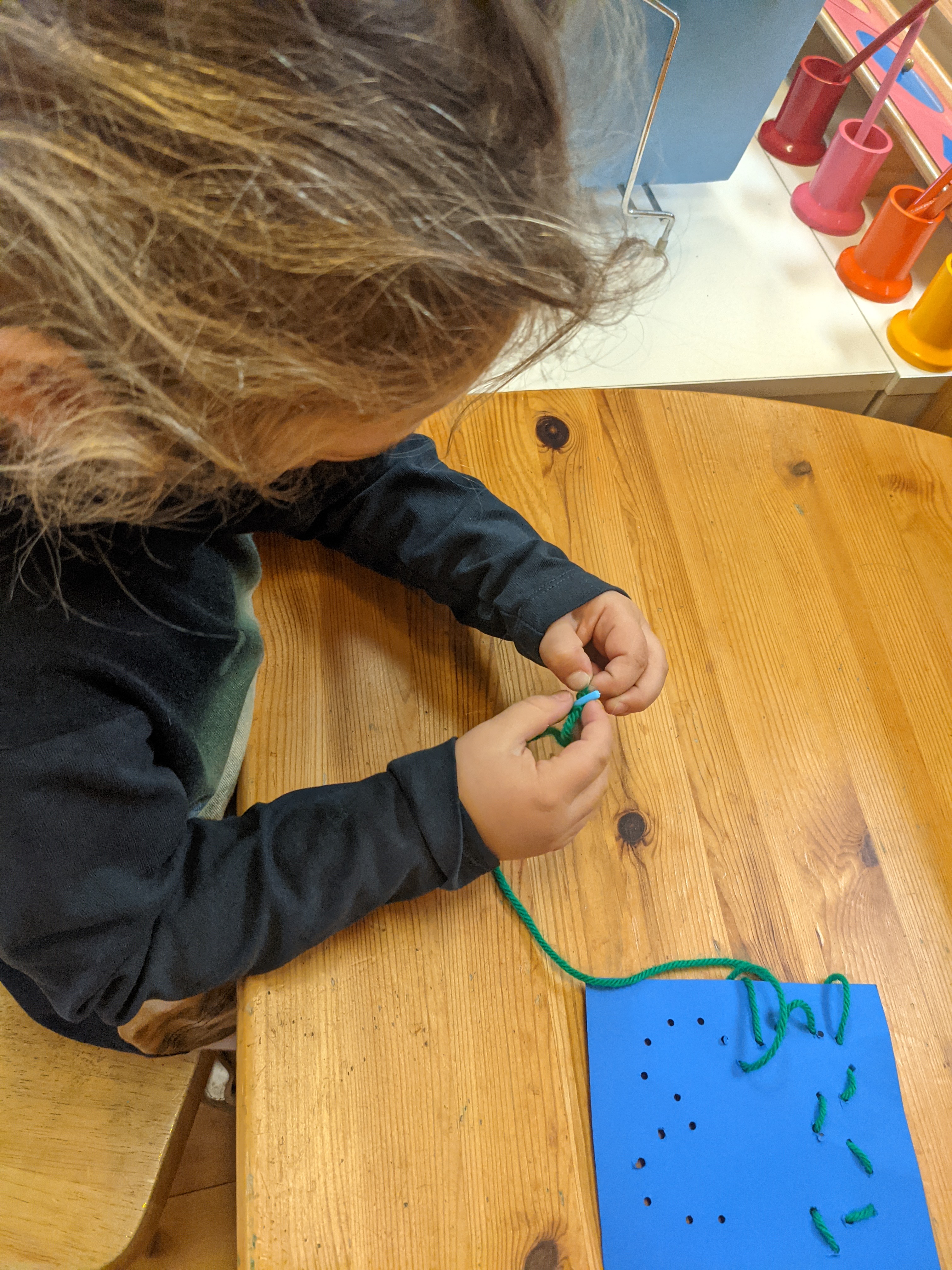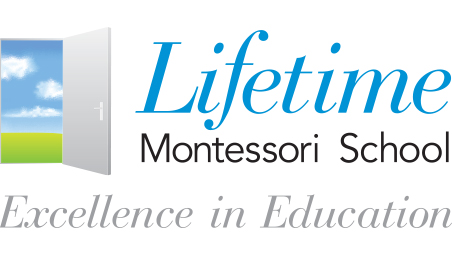(858) 759-0631
I wanted to briefly discuss the Sensorial area of our classroom since that is an area that many of our children are engrossed in right now. Sensorial comes from the words: sense or senses. The purpose and aim of Sensorial work are for the child to acquire clear, conscious, information and to be able to then make classifications in his environment. Montessori believed that sensorial experiences began at birth. Through his senses, the child studies his environment. Through this study, the child then begins to understand his environment. The child, to Montessori, is a "sensorial explorer". Through work with the sensorial materials, the child is given the keys to classifying the things around him, which leads to the child making his own experiences in his environment. Through the classification, the child is also offered the first steps in organizing his intelligence, which then leads to his adapting to his environment, and thus leads to higher intelligence.
Sensorial exercises were designed by Montessori to cover every quality that can be perceived by the senses such as size, shape, composition, texture, loudness or softness, matching, weight, temperature, etc. Because the exercises cover such a wide range of senses, Montessori categorized the exercises into eight different groups: Visual, Tactile, Baric, Thermic, Auditory, Olfactory, Gustatory, and Stereognostic. In the Visual Sense Exercises, the child learns how to visually discriminate differences between similar objects and differing objects. In the Tactile Sense Exercises, the child learns through his sense of touch. In the Baric sense exercises, the child learns to feel the difference of pressure or weight of different objects. This sense is heightened through the use of a blindfold or of closing your eyes. In the Thermic Sense exercises, the child works to refine his sense of temperature. In the Auditory Sense exercises, the child discriminates between different sounds. In doing these different exercises, the child will refine and make him more sensitive to the sounds in his environment. In the Olfactory and Gustatory Sense exercises, the child is given a key to his smelling and tasting sense. Although not all smells or tastes are given to the child in these exercises, the child does work to distinguish one smell from another or one taste from another. He can then take these senses, and apply them to other smells or tastes in his environment. In the Stereognostic Sense Exercises, the child learns to feel objects and make recognitions based on what he feels. "When the hand and arm are moved about an object, an impression of movement is added to that touch. Such an impression is attributed to a special, sixth sense, which is called a muscular sense, and which permits many impressions to be stored in a "muscular memory", which recalls movements that have been made."(Montessori, Maria)
Montessori's materials for the Sensorial work came from her observations and ideas and materials from the French doctors Itard and Seguin. Unlike the material used for Practical Life, this material has either never been seen or never been used by the child in his everyday life. The material is presented in a specific way or a specific pattern: the child learns to match the similar things, then he is shown how to grade the material based on its quality, and then he receives the language related to his work. Presenting the material to the child in this way allows him to fully understand the concept of his work.
All of the Sensorial materials were designed keeping the same ideas in mind.
- All of the material isolates the one quality that is to be worked with by the child. This allows the child to focus on that one quality.
- All of the materials have, what is called, control of error. This calls to the child to make the corrections himself.
- All of the material is aesthetically pleasing. Such as with the Practical Life materials, this attracts the child's attention to the objects and allows the child to manipulate the materials with ease.
- Most importantly, all of the material could be called "materialized abstractions". This means that through Montessori's Sensorial materials, abstract concepts are made into concrete materials.
Although Montessori Sensorial materials are not readily found in the home, you can encourage this concept by talking to your child while out and about. Use descriptive language to describe colors, length, width, smells, etc. This will not only indirectly prepare your child for language, but will also help build vocabulary, confidence, and help them to classify and adapt to the world around them.

